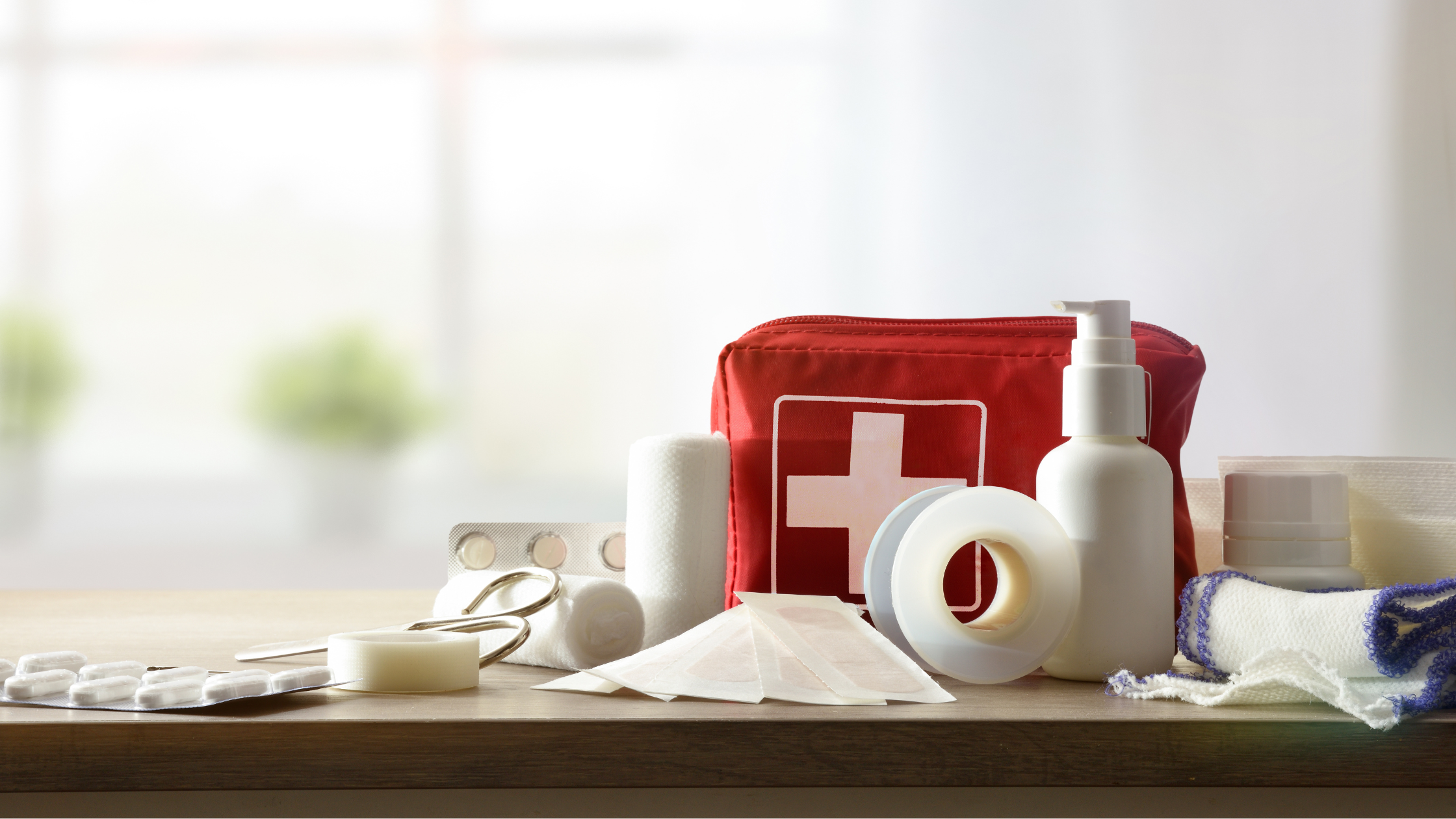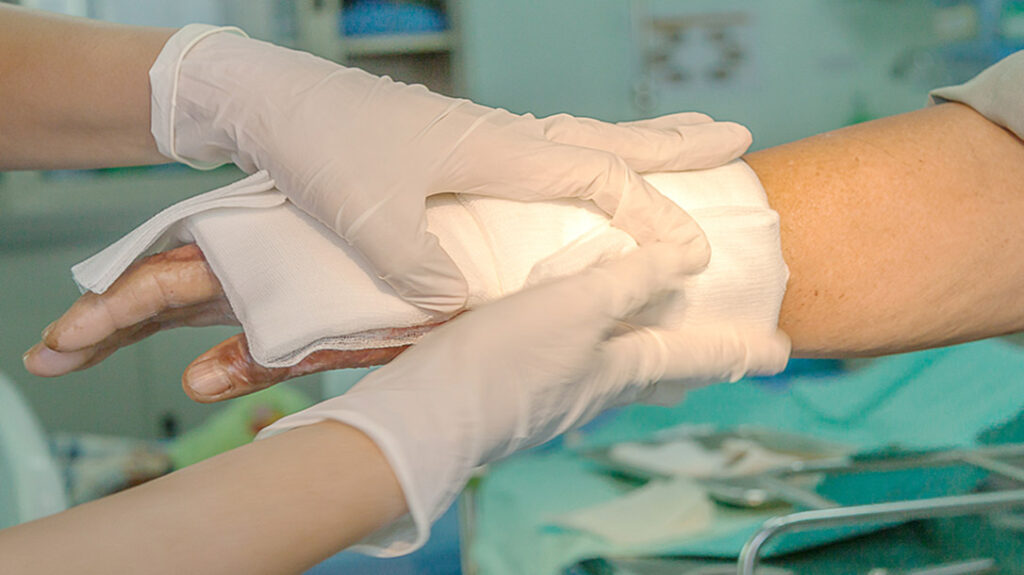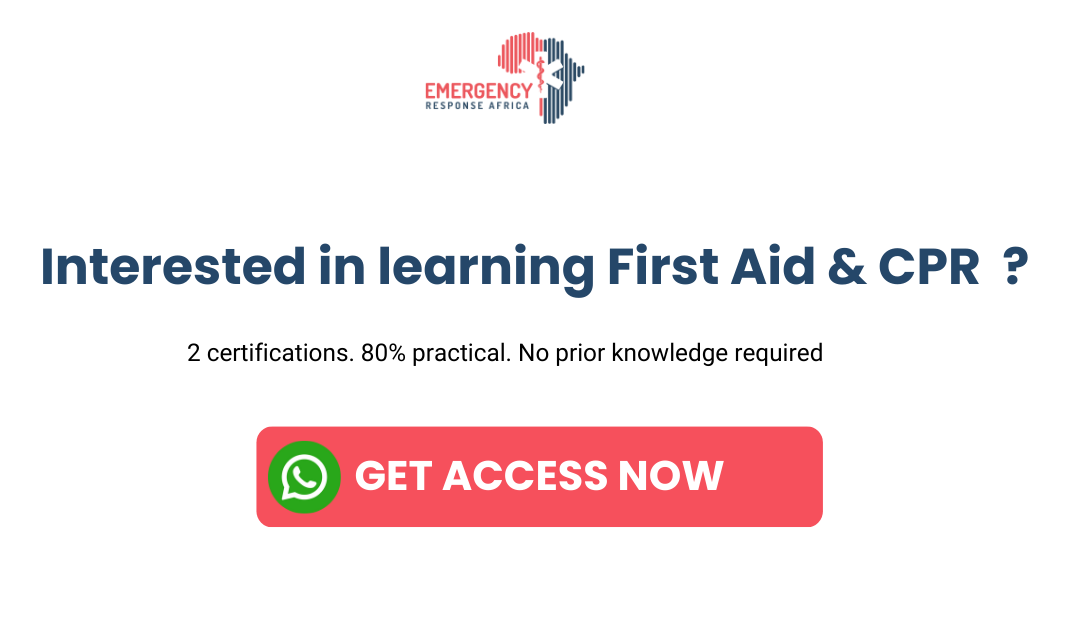What would you do if you got a cut or bite from a spider or insect? How will you handle it if you get a burn with minor injuries? These injuries happen everyday and learning first aid tips: how to treat burns, cuts and bites will save the life of the victim or casualty.
First Aid Tips: How to Treat Burns, Cuts and Bites
First aid sometimes referred to as EMERGENCY AID is the first skilled assistance given to a victim (sick or injured) on the occurrence of an accident or sudden illness in order to preserve life, prevent further injury and relieve suffering until qualified medical care is available. To be effective at any form of true first aid you need to obtain some training or instruction.
Emergency Response Africa is best at first aid and CPR training with both physical and online options.
Principles of First Aid
The key guiding principles and purpose of first aid, is often denoted by 3 Ps.
- Prevent further injuries
- Preserve life
- Promote recovery
What is a Burn
Burns are damage to the tissue of your body caused by heat, too much sun, chemicals or electricity. Burns can range from being a minor injury to a life-threatening emergency. It depends how deep and how large they are.
Remember, when in doubt or if you think the individual’s life is in danger, call your local emergency contact or private EMS like Emergency Response Africa. Remain calm and provide the operator with the necessary information to get the EMS personnel to you.
Types of Burn
Burns are primarily divided into three categories: first-degree or superficial burns, second-degree, or partial thickness burns and third-degree or full thickness burns. How these types of burns are treated initially will determine whether there is a successful outcome
-
First Degree Burn
A first-degree burn affects the outer or top layer of skin only. It may be blistered, red and painful.
-
Second Degree Burn
A second-degree burn damages the first and second skin layers. It may be mottled red and white, dark red or pale yellow. It will be painful and is often blistered.
-
Third Degree Burn
A full thickness burn (third-degree burn) reaches as far as the fat underneath the skin. It may look brown, black or white, and feel dry and leathery. A full thickness burn can destroy nerves, so you may not feel the pain

First Aid Tips for Burn
DO’s
- Stop the burning process: cool the burn with running cool (not cold) water for at least 5 minutes. But do not use ice, as this may cause further skin damage. Do not over cool! If the victim starts to shiver, stop the cooling process.
- Remove all jewelry, watches, rings and clothing around the burned area as soon as possible.
- Administer an over-the-counter pain reliever such as ibuprofen or acetaminophen for pain control.
- Follow the directions on the label. Consult a physician or health care provider if pain is not relieved.
- Cover the burn with a sterile gauze bandage or clean cloth. Wrap the burned area loosely to avoid putting too much pressure on the burn tissue.
- Minor burns will usually heal without further treatment.
- For small area burns, apply soothing lotions that contain aloe vera to the burned area to help relieve the pain and discomfort.
- Seek medical attention if there is a persistent fever not relieved by medication or redness that may extend beyond the border of the burn or pain that is not controlled by ibuprofen or acetaminophen.
- Drink plenty of fluids (electrolyte containing solutions such as gator aid) if the person appears to be dehydrated.
DON’TS
- Do not apply ice – this may cause further damage to the skin.
- Do not use any butter, ointments or other home remedies on the burn. Such substances may trap the heat in the tissue and make the burn worse.
- Do not break any blisters…leave intact.
- Do not delay seeking medical attention if the burn is larger than the size of the victim’s palm.
RELATED SERVICES
BITES AND STINGS
People are bitten and stung every day by insects, spiders, snakes, animals and marine life. Most of the time, these bites and stings do not cause serious problems. However, in rare circumstances, certain bites and stings can cause serious illness or even death in people who are sensitive to the venom.
-
Insect Stings
Most of the time, insect stings are harmless. If the person is allergic, an insect sting can lead to anaphylaxis, a life-threatening condition.
What to Look For Signals of an insect sting include:
- Presence of a stinger.
- Pain.
- Swelling.
- Signals of an allergic reaction.
First Aid Tip For Bites
- Remove any visible stinger.
- Scrape it away from the skin with a clean fingernail or a plastic card, such as a credit card, or use tweezers.
- In the case of a bee sting, if you use tweezers, grasp the stinger, not the venom sac.
- Wash the site with soap and water.
- Cover the site and keep it clean.
- Apply a cold pack to the area to reduce pain and swelling.
- Call your local emergency response services if the person has any trouble breathing or for any other signals of anaphylaxis.
READ ALSO
First Aid for Cuts
Cuts are commonly caused by sharp objects as well as blows from blunt objects that split the skin. The edges may be jagged or smooth. A cut may not be painful if nerves are injured, and a deep cut can also cause damage to vessels and other soft tissue. Cuts tend to bleed more freely than scrapes, which helps to remove dirt and debris. The problem is cuts that bleed too freely.
To Control Bleeding
- Cover the wound with a dressing and apply direct pressure with your hand.
- Still applying pressure, elevate the wound above the level of the heart.
- Secure the dressing with a roller bandage, use overlapping turns to cover the entire dressing, then tie or tape in place.
- Be sure you haven’t wrapped it too tight by feeling for warmth and checking the color below the wound. (i.e. if the wound is on the forearm, you would check the hand)
When the Bleeding Won’t Stop
- Follow steps 1 – 3 for cuts again, placing them ON TOP of the original dressings and bandages.
- Do not remove the original dressing.
- If the bleeding continues, apply direct pressure to the “pressure point” above the wound.
- This works by pressing the artery against the bone, which constricts the flow of blood.
- For example, if the wound is on the leg, you would place the heel of your hand and press where the leg bends at the hip.
- Generally, if you can feel a pulse at a spot, it will work as a pressure point. However, this should not be the sole means of controlling bleeding. Think of it as a last resort.
- Seek emergency medical attention for any severe bleeding.
Emergency Response Africa (ERA)
ERA first aid and CPR courses teach critical life-saving skills, including recognising signs of breathing and circulation emergencies and calling for help, performing CPR, and using an AED.
“Safety is 30%. Common Sense, 80%. Compliance and the rest is good luck.”
— Barry Spud,”




